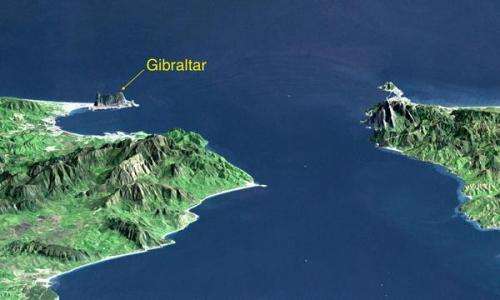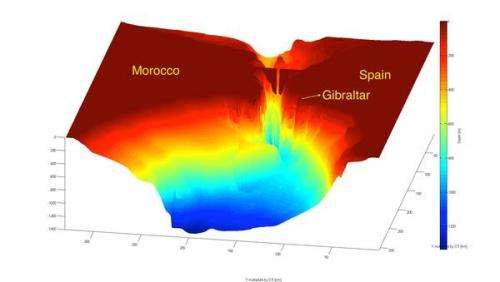A dam at gibraltar to control the level of the sea

For his master's work, a student in hydraulic engineering has conceived of a dam in the Strait of Gibraltar to contain rising waters in the Mediterranean. This work of art worthy of Pharoah would allow boats and marine wildlife to pass while maintaining a constant sea level.
By the year 2100, how will coastal areas be redrawn? Will they be erased, eroded, permanently lost? The most optimistic forecasts estimate waters rising one foot, and the most pessimistic talk of more than one meter.
Venice and the Nile Delta could be wiped off the map. Moroccan coastal areas would disappear too. The risks of erosion, saltwater intrusion into crops or groundwater, undersized dams unable to withstand the hydraulic variations – these scenarios must be given serious consideration.
Ha Phong Nguyen considered the prospect of a dam at Gibraltar: "The goal is to close the Mediterranean with two dams, one between Spain and Morocco and the other between Djibouti and Yemen, to control the water level." The simplest solution is to close the Strait over the narrowest distance. While that point is only 14km across, its depth is 800 meters. "For this to be realistic, I had to locate the dam to the East of Tangier in the Mediterranean. The distance between the two continents there is 27km, but it's half as deep."
Partly closing the Strait of Gibraltar

The young engineer tested numerous configurations before finding a geometry that contains water while allowing the 300 daily ships and Russian submarines located in this area to pass, and without interrupting the crossover of animal species that migrate to the sea in winter and go into the ocean in the spring. "By closing the Strait of Gibraltar 90% and leaving an opening of 1 km, it's possible to maintain a constant level in the Mediterranean, assuming that the level of the Atlantic increases by 50 cm."
His master's project was to build a numerical model to simulate the currents in this passage. To validate the model it was necessary to compare data with historical values taken during campaigns in the 1970s and 1990s. The Spanish navy holds essential topographic data which are considered confidential documents. Special requests were required to gain access.
Operation of the dam
By closing the Strait, the flow speeds of water increase, which can help generate energy. Currents in the Strait go in two directions. Water from the Atlantic flows into the Mediterranean to compensate for evaporation of sea water; colder and less salty – therefore less dense – water remains on the surface. There is also movement from the Mediterranean to the Atlantic. Plus, the phenomenon of tides must be considered. "In my model I also took into account the tides due to the sun and the moon. In Gibraltar there are two high tides and two low tides each day."
But with the tidal coefficients being low, the dam must rely on other energy inputs to produce the equivalent of a nuclear power plant. "With the tides, I arrived at values between 600 and 1,300 gigawatt hours," says Ha Phong Nguyen. "Mühleberg produces 2000–3000 gigawatts per year. It is essential to combine them with other systems that produce energy, such as wind turbines and geothermal wells."
Ha Phong's project will probably never see the light of day, even if it shares part of a common dream with Swiss engineer Giovanni Lombardi who envisioned a rail tunnel connecting the two continents but was unable to achieve it. The movement of the African and European tectonic plates remains one of the biggest obstacles to such constructions.
Provided by Ecole Polytechnique Federale de Lausanne












.jpg)







